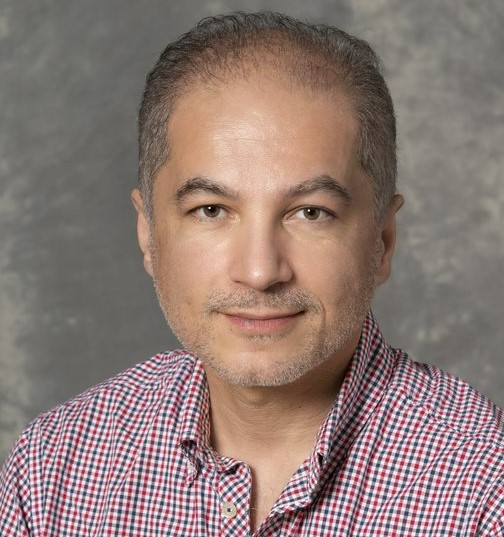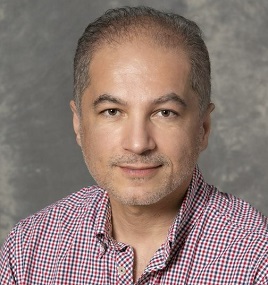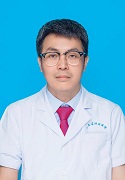Day 1 :
Keynote Forum
Dr Ramin Sadri
Senior Researcher at UCL Cancer Institute London
Keynote: Cancer
Time : 9:00 am

Biography:
Abstract:
Keynote Forum
Rayjean J. Hung
Keynote: A risk prediction model for head and neck cancers incorporating lifestyle factors, HPV serology and genetic markers

Biography:
Prosserman Centre for Population Health Research, Lunenfeld-Tanenbaum Research Institute, Sinai Health, Toronto, Ontario, Canada
Abstract:
Head and neck cancer is often diagnosed late and prognosis for most head and neck cancer patients remains poor. To aid early detection, we developed a risk prediction model based on demographic and lifestyle risk factors, human papillomavirus (HPV) serological markers and genetic markers. A total of 10 126 head and neck cancer cases and 5254 controls from five North American and European studies were included. HPV serostatus was determined by antibodies for HPV16 early oncoproteins (E6, E7) and regulatory early proteins (E1, E2, E4). The data were split into a training set (70%) for model development and a hold-out testing set (30%) for model performance evaluation, including discriminative ability and calibration. The risk models including demographic, lifestyle risk factors and polygenic risk score showed a reasonable predictive accuracy for head and neck cancer overall. A risk model that also included HPV serology showed substantially improved predictive accuracy for oropharyngeal cancer (AUC = 0.94, 95% CI = 0.92-0.95 in men and AUC = 0.92, 95% CI = 0.88-0.95 in women). The 5-year absolute risk estimates showed distinct trajectories by risk factor profiles. Based on the UK Biobank cohort, the risks of developing oropharyngeal cancer among 60 years old and HPV16 seropositive in the next 5 years ranged from 5.8% to 14.9% with an average of 8.1% for men, 1.3% to 4.4% with an average of 2.2% for women. Absolute risk was generally higher among individuals with heavy smoking, heavy drinking, HPV seropositivity and those with higher polygenic risk score. These risk models may be helpful for identifying people at high risk of developing head and neck cancer.
Keynote Forum
Wein Hu
Keynote: HOW DO CELLS DETERMINE WHAT SIZE TO GROW BEFORE DIVISONBody mass index and body shape before treatment and nasopharyngeal carcinoma prognosis: a population-based patient cohort study in southern China
Time : 2:00- 3:00 PM

Biography:
Dr. Wein Hu is a board-certified medical oncologist and physician-scientist with decades of successful R&D experience. She has played a critical leadership role in new drug development, global regulatory approval, successful life cycle management, and commercialization of multiple compounds
Abstract:
Keynote Forum
Dr. Kunal Joon
AUTHOR – KUNAL JOON University : ST .Thomas
Keynote: Progressive toward cell therapy for neurodegenerative diseases

Biography:
Author : kunal joon
Mobile number: +919992201535
Email id : kunaljoon37@gmail.com
Category : oral presentation
Abstract:
Several neurodegenerative diseases (NDD), such as Parkinson’s, multiple sclerosis (MS), and vision loss, are caused by neural loss due to heredity, aging, and traumas. Millions of people worldwide are affected by these debilitating ailments, but no treatments are available. Advancements in stem cell and regenerative medicine provide promising ways to develop therapies to treat NDD. Our studies are focused on investigating the efficacy of perinatal mesenchymal stem cell (pMSC)-derived progenitors in animal models of NDD. pMSCs have advantages over adult MSCs in that they are highly proliferative, do not display HLA-DR markers, and thus are not immunogenic. Our studies showed that pMSC-derived neural progenitors (NPs) reversed disease symptoms, provided neuroprotection, improved myelination, and induced neuroregeneration in experimental autoimmune encephalomyelitis (EAE) mouse model of MS. NP transplantation also modulated regulatory immune cells and modulated BDNF and FGF signaling pathways. Likewise, we found that pMSC-derived retinal progenitors (RPCs) improved retinal structure and functions in the rd12 model of retinitis pigmentosa. RPCs survived and integrated into the neural layer of the retina and stopped retinal degeneration. RPCs promoted neurogenesis and functional recovery of the retina through inhibition of BMP and activation of JAK/STAT and MAPK signaling pathway. The results of these studies will be presented at the conference.
- CANCER
Session Introduction
Kelli Mauric
Owner / Entreprenuer at Balance the Brain Professional Corp
Title: HOW HUMANS ARE GENETICALLY CODED TO EVOLVE VERSUS HOW GENETIC EXPRESSION WILL EVOLVE HUMAN DEVELOPMENT?

Biography:
Experienced Nurse Practitioner with a demonstrated history of working in the hospital & health care industry. Skilled in Electronic Medical Record (EMR), Nursing, Nursing Education, Women's Health, and Nurse Practitioners. Strong healthcare services professional with a Master of Science (MS) focused in advanced practice nursing from The Ohio State University.
Abstract:
Statement of Problem
The truth of reality with the awareness of the present moment may be too boring, frightening, or falsely reassuring to humanity. For these three simple reasons, humanity welcomes the future and struggles to forget the past. In the past 30 years, or three decades, evidence-based medicine has given the world the most advanced scientific data in all aspects of human life.
Technological advances have made this vast amount of evidenced based scientific data shareable to diverse populations, demographics, and societies. Since 1996, in the US alone, the National Institute of Health (NIH), the Center for Disease Control (CDC), National Center for Biotechnology Information (NCBI), The US National Library of Medicine (NLM.) and PubMed Central (PMC), US Department of Health and Human Services (HHS) have collected, analyzed, displayed, debated, and agreed upon programs, policies, laws, regulations, grants, contracts, and services to protect the health and safety of the United States population (1,2,4).
In 2022, the United States citizen population was listed as 333.29 million people in 50 states (2). The industry problems of economics, health and safety for humanity in the 20th century due to lack of knowledge have evolved to problems of vast knowledge with never ending desire for more knowledge at the expense of the quality of life for human beings. Humans have no regrets at bringing human life back from the dead. No heartbeat, no breathing, no problem … bring on CPR with extraordinary life saving measures was the 20th century moto! Economic stability was foregone at the expense of research in every industry and field of study.
As we enter the third decade of the 21st century, the human right to life is not only the right to life, but the right to a healthy quality of life … yet to be defined.
History
As of 2014, The United States National Institutes of Health (NIH) initiated a requirement that all NIH grant recipients to use both male and female animals in their research. Historically, prior to 2014, only male animals were used in NIH research (3). From 2008-2014 and 2015 to 2023, the NIH an XLS spreadsheet as a visual of the research dollars in millions per year for each of the 308 disease categories. We now have a 6 year span in 308 disease areas to compare the male animal studies from 2008-2014 to the male and female animal studies from 2015-2023(4).
Furthermore, in order for the United States citizens to vote for government leadership in healthcare, it is vital the united states closes the gap of human biology knowledge between patient or US citizen and healthcare provider to enhance personal healthcare outcomes as well as develop healthcare policy. Understanding the essential functions of the human body is a basic human right that benefits all humanity. The health of one human will benefit the health of another human. If a human does not comprehend the essential necessity of self-care, how can that human decide the health of another?
Research
The human survival response has propelled humanity’s existence through the turmoil of environmental disasters, disease, disability, death, famine, poverty, tyranny, and war. The human element of self-care and care for others allows for empathy and compassion bringing forth the birth of new life, the healing of the sick, the growth of food, separation of waste disposal from clean water sanitation, shelter, and comradery.
Evidenced based medicine provides a concrete foundation in describing human biology and reproduction over time as human evolution propels societies forth in human existence.
The NIH has spent the past 15 years and trillions of dollars in continuation of the human genome project, genetic and disease correlations, and stem cell research for regenerative medicine, gene therapy clinical trials, identification of source and function of stem cells in human and non-human sources(1).
Genetics can be as simple as it can be complicated. Every human should have education for five basic human biology concepts regarding human stem cells:
1. Define each type of human stem cell.
2. Define where in the body each stem cell originates.
3. Define the functions stem cell types provide.
4. Describe the cost to each US citizen to support the NIH in stem cell research.
5. Describe laws and regulations health insurances must abide by so US Citizens have accessible, affordable and applicable stem cell medicine in personal as a consumer of healthcare in clinical practice healthcare in the United States (4).
DNA, the human genetic code, one half from the father and one half from the mother, provides information starting from amino acids. These four amino acids, adenine, guanine, cytosine, and thymine create two fused carbon – nitrogen rings that bond with a sugar called deoxyribose and one phosphate group in a double helix form. The sugars and phosphates vertically on the outside as the backbone and the horizontal nitrogen bases bonded with hydrogen as the inner strength of the double helix.
RNA, the human transcription genetic, allows for genetic expression without altering the original DNA. RNA consists of adenine, guanine, cytosine, and uracil providing a single carbon-nitrogen ring allowing for manipulation of the RNA. RNA can perform as a messenger, a ribosome, a transfer, or a regulator of original DNA code. The messenger RNA is a transcript or copy of the original DNA code of amino acids sequencing. In the messenger RNA form, the amino acids sequencing code of the original DNA code is carried and to be read by the ribosome RNA structures. The ribosomal RNA structures need the transfer RNA to bring the amino acids sequencing code of the original DNA from the messenger RNA into the cell ribosome structures where RNA synthesis occurs making protein. DNA cannot be transferred without RNA transcription (messenger RNA), RNA structures (ribosome RNA), and RNA information (transfer RNA) to complete protein synthesis. Simple.
Complicated involves microRNA which is single stranded RNA from plants, animals and some viruses to alter gene expression during RNA transcription, structure and transfer for protein synthesis; such as occurred with gain of function research and Covid 19. Small interference RNA goes a step farther to interfere with double helix structure of the original DNA amino acid code by degrading mRNA after transcription, preventing translation, in the expression of specific genetics (4,5,6,8).
Any research without specific clinical practice applications for improved functional human existence must be restricted until dying and death with dignity can be defined, agreed upon, and enacted and enforced in society. Hospice for humanity should be a focus before altering original DNA genetic code.
Biography
www.linkedin.com/in/kelli-mauric-414b8b
Website: www.kellimauric.com
E-mail: thisiswhy@kellimauric.com

 Kelli Kemenah Mauric is an entrepreneur who founded, owns, and operates Balance the Brain Professional Corporation; which focuses on women’s similarities as much as our differences to find the balance required to the injustices brought against us as individuals, our families, our communities, societal differences and throughout our own states and countries. Women’s Health and Human rights are the company’s foundation.
Kelli Kemenah Mauric is an entrepreneur who founded, owns, and operates Balance the Brain Professional Corporation; which focuses on women’s similarities as much as our differences to find the balance required to the injustices brought against us as individuals, our families, our communities, societal differences and throughout our own states and countries. Women’s Health and Human rights are the company’s foundation.
Recent Publications (minimum 5)
3. Clayton JA, Collins FS. Policy: NIH to balance sex in cell and animal studies. Nature. 2014 May 15;509(7500):282-3. Doi: 10.1038/509282a. PMID: 24834516; PMCID: PMC5101948.
4. National Institute of Health (NIH). Research, Condition, and Disease Categorization (RDCD). RDCD Funding Summary 2008-2023. https://report.nih.gov/funding/categorical-spending/rcdc.
5. BioExplorer.net. (2023, March 02). Where Do Stem Cells Come From?. Bio Explorer. https://www.bioexplorer.net/where-do-stem-cells-come-from.html/.
6. Neurology Market: A BCC Research Overview. (Aug 2019) https://www.bccresearch.com/marketresearch/pharmaceuticals/neurology-market-research report.html PHM215A, BCC Publishing.
7. France K, Lotti TM. Psycho-Neuro-Endocrine-Immunology: A Psychobiological Concept. Adv Exp Med Biol. 2017; 996:123-134. Doi: 10.1007/978-3-319-56017-5_11. PMID: 29124696.
Xu JQ, Murphy SL, Kochanek KD, Arias E. Mortality in the United States, 2021. NCHS Data Brief, no 456. Hyattsville, MD: National Center for Health Statistics. 2022. DOI: https://dx.doi.org/10.15620/cdc:122516

Biography:
Dr Ramin Sadri undertook his undergraduate studies in Physiology and Biochemistry at the University of Reading, UK. He developed interest in hormone-dependent cancers and obtained a Ph.D. in pharmacology at Cardiff University, UK. After gaining a research fellowship from the Royal Society, UK, he embarked on postdoctoral work at the University of Florence, Italy. This was followed by periods of postdoctoral research at Baylor College of Medicine, USA, Institut Curie in France, and at the Imperial Cancer Research Fund, UK.
In the last 12 years he developed interest in genomics working at Cancer Research UK and The Francis Crick Institute. Currently he is based at UCL Cancer Institute in London, UK.
Abstract:
Medical genomics, epigenetics, automation of Library preparation for exome, whole genome and RNA-seq using the Hamilton NGS STAR platform in clinical oncology. SARS-CoV-2 sample/Library preparation as part of COG-UK Consortium using the Agilent Bravo, Hamilton, Mosquito and Dragonfly automation platforms .
Sanger sequencing set-up and clean up using the QIAgility robot and Beckman Coulter Biomek Fx liquid handling system. Bespoke scripting of qPCR set-up using Biomek Fx. Nucleic acid extraction using various automation platforms.
- Cancer Therapies
Session Introduction
Yifan Li
Shanxi Province Cancer Hospital, Taiyuan, China
Title: The role of chemotherapy cycles in treament of gastric cancer should be reinterpreted

Biography:
Abstract:
We retrospectively reviewed the medical records of patients with pathologically confirmed gastric cancer who underwent curative surgical resection follow-up within 3 years at Shanxi cancer hospital between 2002 and 2020. According to the results of univariate and multivariate analysis by logistic regression showed that TNM Stage(P=0.002), chemotherapy cycle(P=0.000) were risk factors of recurrence of follow-up within 3 years. The results of the univariate and multivariate by Cox regression were clearly presented that T Stage(P=0.000), TNM stage(P=0.001), maximum diameter of tumor(P=0.001) were risk factors of overall survival of follow-up within 3 years. If we attached much importance to insure chemotherapy cycle adequately performance, the overall survival rate may be significantly improved. At the same time, maximum diameter of tumor can be reduced through complete chemotherapy implement. Finally, overall survival ratio of follow-up within 3 years may be enhacedenhanced by this measure. And then, we develop novel nomograms to accurately predict overall survival (OS) of chemotherapy cycles<9 and chemotherapy cycles≥9 and construct risk stratification to differentiate low-risk and high-risk of two cohorts . Nomograms predicting 3- and 5-year OS were built according to variables resulting from multivariable Cox models. Discrimination ability was calculated using the Harrell’s Concordance Index. The constructed nomogram was subjected to 1,000 resamples bootstrap for internal validation. Calibration curves for the new nomograms were used to test the consistency between the predicted and actual 3- and 5-year OS. Decision curve analysis (DCA) was performed to assess the clinical net benefit. The Concordance index (C-index) and time-dependent receiver operating characteristic (t-ROC) curves were used to evaluate and compare the discriminative abilities of the new nomograms. Finally, prognostic risk stratification of gastric cancer was conducted with X-tile software and nomograms converted into a risk-stratified prognosis model. For the nomogram predict OS of chemotherapy cycles <9, C-index was 0.711 (95%CI: 0.663-0.760) in internal validation and 0.722(95%CI:0.662-0.783) in external validation, which was better than AJCC 8th edition TNM staging (internal validation:0.627 ,95%CI: 0.585-0.670) and (external validation:0.595,95%CI:0.543-0.648). The C-index of the nomogram for chemotherapy cycles≥9 in internal validation was 0.755 (95%CI: 0.728-0.782) and 0.785(95%CI:0.747-0.823) in external validation, which was superior to the AJCC 8th edition TNM staging (internal validation: 0.712 95%CI: 0.688-0.737) and (external validation 0.734, 95%CI:0.699-0.770). Chemotherapy cycles≥9 is therefore recommended for high-risk patients with chemotherapy cycles <9, but not for low-risk patients. Meanwhile, combination with multiple therapies are essential to high-risk patients with chemotherapy cycles ≥9 and unnecessary for low-risk patients. We retrospectively evaluated 412 patients of stageâ…¡ and 902 patients with stageâ…¢ gastric cancer who underwent D2+gastrectomy plus adjuvant chemotherapy or neoadjuvant chemotherapy. Propensity score matching (PSM) analysis was performed with a 1:1 ratio to reduce the real-life baseline difference between the two groups. After PSM, the baseline characteristics were similar between the two groups for stageâ…¡and â…¢. Kaplan-Meier analysis showed that no difference was observed in OS (stage â…¡:HR 0.856, 95%CI 0.454-1.612; P = 0.630, stage â…¢: HR=1.175, 95% CI: 0.926–1.492, p=0.173) or PFS (stage â…¡:HR 0.694, 95%CI 0.409-1.177; P = 0.173, stage â…¢: HR=0.934, 95% CI: 0.658–1.025, P=0.074) between the two groups. The overall recurrence(P<0.001), local-regional metastasis (P=0.002), distant metastasis(P=0.001) rates in chemotherapy cycles≥9 group were significantly lower than in the chemotherapy cycles<9 group for stage â…¢. The interaction analysis by Cox proportional hazard regression model showed that intestinal type, proximal gastrectomy, maximum diameter of tumor≥6cm had higher risk of total mortality in group of chemotherapy cycle<9. As a whole, chemotherapy cycles≥9 is unnecessary for patients with stageâ…¡ and stage â…¢ owing to its insignificant role in prognosis of gastric cancer. On the other side, chemotherapy cycles≥9 has a major part to play in avoiding recurrence of patients with stage â…¢, except for the role in stageâ…¡.
